| The story about the Lancaster W4888 |
|
The story about the Lancaster W4888
Jan J. van der Veer
translation John Rowan, Bruxelles
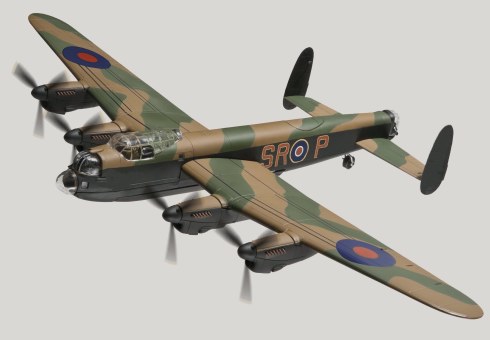 On May 4th 1943, whilst returning home from a successful bombing raid on Dortmund in Germany involving 596 aircraft, the Lancaster W4888 of 101 RAF Squadron was engaged over the IJsselmeer in the area the Frisian Coast, by a Messerschmitt ME 110. The pilot of this aircraft was one Oberleutnant Lothar Linke, a veteran of the Battle of Britain (July-October 1940), during which he was based in Norway. In May 1943 he was based at the Fliegerhorst Leeuwarden (capital of the province of Fryslân) as a member of Nachtjagdgeschwader 1. He would be killed in action just ten days later near Lemmer in the province of Fryslân. Damaged by fire from Linke's Messerschmitt, the Lancaster W4888 immediately caught fire. 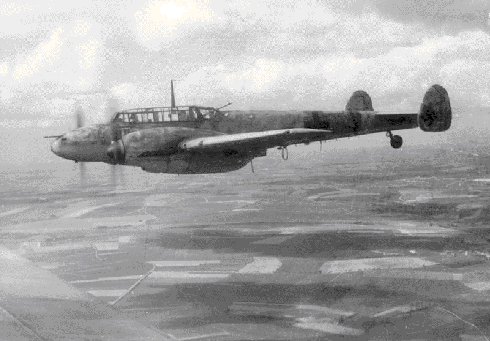
Messerschmitt ME 110
Given the apparent impossibility of reaching its home base of Holme-on-Spalding Moor, near the town of Hull in northern England, Flying Officer Nicholas J. Stanford decided to look for a landingplace in the meadows, adjoining the Frisian coast. Navigating by the coast, he reached Workum, where he turned his plane (now ablaze, potentially with wounded airmen aboard) over the town and the surrounding area. As it flew over the railwaystation of Workum he steered towards 90º west, again in the direction of the IJsselmeer. And as Flying Officer Stanford struggled to land the plane, a large farmhouse (with the name of "Sathe Westerein') rose up in front of him. He managed to avoid this obstacle, but the tail of the machine broke off and landed in a barn of this farmhouse. Rear-gunner John M. Hadfield (who very probably was already dead by this point) was thrown out and he fell in a meadow west of that farmhouse. 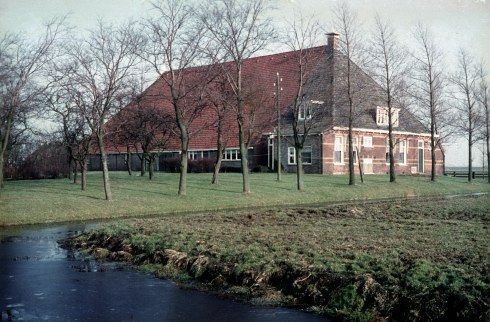
sathe Westerein (ca. 1970)
photo: Oepke Santema
The burning plane just passed the Alde Dyk and crashed around 150 metres from the two farmhouses on the south side of that Dyk. All the members of the crew were killed, except navigator Ralph Duncan Paterson, hwo had managed to exit the plane via the emergency doors on the bottom of the plane. With burns to his hands, face and knees suffered whilst leaving the plane Paterson parachuted to ground near the lock of Workum. He was made a prisoner of war and sent to the local doctor Bernard C. Noordhoff for medical care. He was allowed to remain her for nursing for several days. From the window of his room, where he waa guarded by a German soldier, he saw the carriages with the bodies of his comraeds passing by. 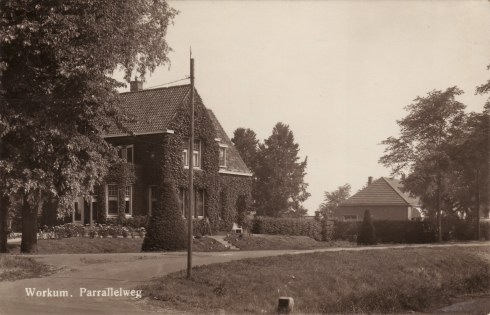
the house of dr. Noordhoff
After a few days he was sent to the Bonifatiushospital in Leeuwarden, then to a military hospital yn Frankfurt am Main (Germany) and then on to various camps in Germany, ending up in Stalag Luft III, near Sagan in Silesia (today in Poland). Here he was involved in the preparations of `The Great Escape', March 24/25, 1944. After the war he returned to England and resumed his former profession of policeman in London. The Comrades in Arms of Paterson who did not survive the crash at 01.40h on May 5th were Arthur Harold Clark, William T. Lewis, Anthony Jules Lawson Lyon, George William Francis Reynolds and Nicholas James Stanford, They were burried at the General Cemetery of Workum at the Spoardyk on May 7th. A small detachment of German soldiers of the Hafenüberwachung Workum had given them a military salut at the former orphanage of Workum, where their corpses had been placed on biers. Reverend ds. Jan van Veen of the Dutch Reformed Church in Workum - a clandestine member of the Dutch Resistance - conducted this ceremony. After the funeral of his companions the body of rear-gunner John M. Hadfield was found west of `Sathe Westerein' in a meadow at the edge of a shallow ditch. He was burried May 10th in the same Cemetery as his comrades. . 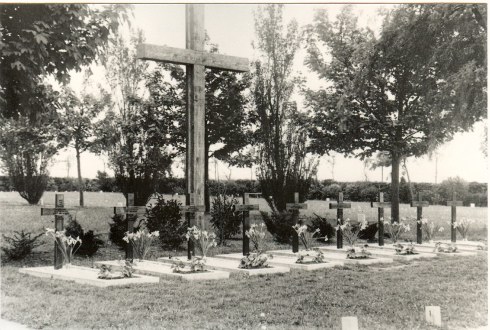 The Warkumer Nijlân, the region in which the Lancaster W4888 crashed, was formerly part of the Zuiderzee, nowadays the IJsselmeer. It was reclaimed in 1624 and lies between the towns of Hindeloopen and Workum. 3 The Alde Dyk is the former seadike, which protected Workum and the surroundings from the Zuiderzee. The farmhouse `Sathe Westerein' is known, in Frisian literature, as the place where in the 19th century the writer dr. Joast Hiddes Halbertsma and his brothers Eeltsje and Tsjalling wrote some of the stories and poems, which can be found in their famous storybook `Rimen en Teltsjes' (Poems and Stories).
Workum, march 2015, © Werkgroep Lancastermonument Workum: Johannes A. Hoekema Henk J. Gorter Gerrit Kemker Jan P. Dykstra Hzn. |
||||||||||||||||||||||||||||||||||